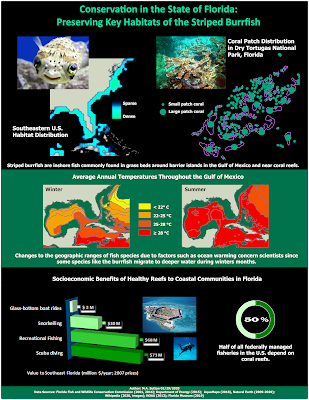Final Project [GIS6005]: Conservation in the State of Florida: Preserving Key Habitats of the Striped Burrfish

Striped burrfish are inshore fish known to exploit a wide range of depths. Although commonly found in grass beds around barrier islands in the Gulf of Mexico (Franks et al., 1972), they are also found near coral reefs (Robins, Ray, & Douglas, 1986), as well as in deeper waters during the winter months (Audubon Society, 2002). Changes to the geographic ranges of fish species due to factors such as ocean warming (Espino et al., 2019) are of concern to scientists. In addition, impacts to fish habitats in tourism-based states such as Florida are considered by economists given the socioeconomic benefits of commercial and recreational fishing to coastal communities (Lellis-Dibble, McGlynn, & Bigford, 2008). As one example of their impact, half of all federally managed fisheries in the U.S. depend on coral reefs (Burton, 2019). In addition, t he total value of coral reefs for southeast Florida was estimated in 2007 to be $174 million/year (Brander & van Beukering, 2013),...




